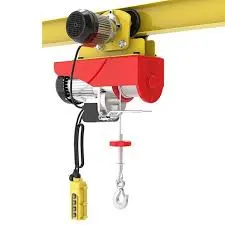


Understanding Fall Protection A Critical Safety Measure
In numerous industries, especially construction and maintenance, fall protection is a crucial aspect of ensuring worker safety. Every year, thousands of workers suffer injuries from falls, often leading to serious consequences. Therefore, education and training on fall protection are paramount, with instructional videos becoming an increasingly popular method for conveying vital safety information.
The Importance of Fall Protection
Falls are one of the leading causes of occupational injuries and fatalities. According to the Occupational Safety and Health Administration (OSHA), falls account for a significant percentage of workplace accidents, particularly in the construction industry. The repercussions are not just physical; they can also have financial implications for both workers and employers, including medical expenses, legal fees, and lost productivity. Thus, understanding and implementing fall protection measures is essential for creating a safe working environment.
Components of Fall Protection
Effective fall protection encompasses several key elements, which should be thoroughly covered in any educational video. Firstly, it is critical to identify potential fall hazards in the workplace. Common scenarios where falls can occur include working on ladders, scaffolds, roofs, or elevated platforms. Protective measures must be tailored to these specific situations.
The second component is the use of personal protective equipment (PPE). This can include harnesses, guardrails, safety nets, and other devices designed to reduce the risk of falls. Videos demonstrating the correct use and maintenance of these safety tools can greatly enhance workers' understanding and compliance.

Furthermore, training should address planning and supervision. Every job site should have a fall protection plan outlining the steps to minimize risks. This includes inspection protocols to ensure that all equipment is functional and that the work environment is safe.
The Role of Instructional Videos
Instructional videos play a crucial role in disseminating fall protection information. Visual aids often enhance understanding more effectively than written materials alone. Videos can illustrate best practices and common mistakes in a way that is easy to follow. They can also provide real-life scenarios, showing potential hazards and how to mitigate them.
For example, a video might depict a worker preparing to use a ladder improperly, followed by a demonstration of the correct way to set it up and secure it. Such practical demonstrations can help reinforce the training topics and improve retention of information.
Moreover, with advancements in technology, videos can be accessed through various platforms, making them available to a broader audience. Organizations can use video as part of their onboarding process or ongoing training programs to ensure that all employees are up-to-date with the latest fall protection standards and practices.
Conclusion
In conclusion, fall protection is a vital safety measure in many workplaces. Comprehensive training through instructional videos can significantly enhance workers' understanding and adherence to safety protocols. By emphasizing hazard identification, the proper use of PPE, and the importance of planning and supervision, employers can create a safer work environment. Investing in effective training resources is not just a regulatory requirement; it is a moral obligation to protect the well-being of workers. Every worker deserves a safe workplace, and fall protection is a fundamental part of realizing that goal.



